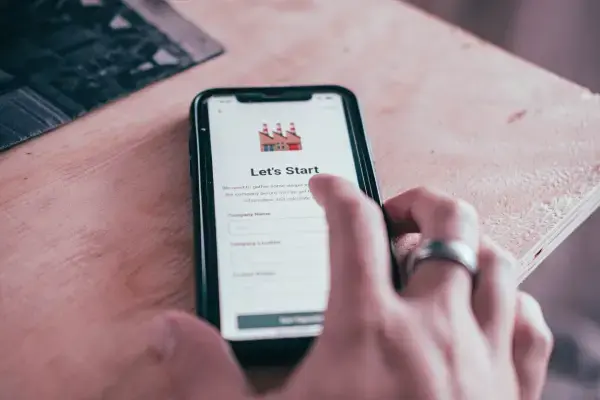Onboarding new employees is a time-consuming and expensive process. The cost of bringing on a new hire can be as high as $3,000. Thankfully, tools like E-Verify help reduce the time, labor, and cost of onboarding.
In this article, we’ll cover everything you need to know about E-Verify from a human resources perspective. You’ll learn the entirety of the verification process, how the enrollment system is implemented in HR, benefits, challenges, and how the technology will shape onboarding in the future.
Understanding E-Verify
The E-Verify program compares information from an employee’s Employment Eligibility Verification I-9 form to records available to the US Department of Homeland Security (DHS) and Social Security Administration (SSA). E-Verify reduces the chances of hiring unauthorized workers by automating the employee verification process.
How Does E-Verify Work
Understanding the E-Verify process is essential for all HR professionals. Below is a step-by-step guide covering the entire procedure, from submission to the employee’s verification notification.
-
I-9 form is submitted: All new hires are asked to fill out the I-9 form containing basic information such as name, DOB, social security number, and US citizenship status.
-
HR rep inputs the information into E-Verify: The HR department is responsible for inputting data from the I-9 form into the system within a few days of the employee’s start date.
-
Database verification: E-Verify cross-references the submitted information using government databases, including the Social Security Administration and the Department of Homeland Security.
-
Response: E-Verify instantly verifies whether the information matches government records. The response is usually one of the following, “Employment Authorized,” “SSA Tentative Non-Confirmation,” or “DHS Verification in Process.”
-
Resolving issues: If discrepancies or mismatches exist between the employee’s provided information and government records, the system will suggest further action. E-Verify could request additional documentation or a second verification process to resolve issues.
-
Final verification: If there aren’t any issues or they’ve been resolved, the system will confirm the employee’s work eligibility.
-
Employee notification: Finally, employees are notified of the E-Verify results. If the outcome is not what they expected, they can contest or correct employee eligibility errors.
Employee Eligibility Requirements
E-Verify requests an I-9 form and documentation to verify employment eligibility. The I-9 form requires the following information for US-born citizens:
-
Name
-
Address
-
Date of Birth
-
Social Security Number
For immigrants, the following is required:
-
US citizen or immigration status
-
Alien Number/USCIS Number
-
Form I-94 admission number
-
Foreign passport number
Both types of employees also need to sign and date the document. HR representatives are responsible for entering information regarding the documentation, their name, signature, date, organization name and address, and first day of employment.
Documentation is also required. Acceptable forms include a passport, passport card, permanent resident card, and employee authorization document card. These documents are adequate on their own to verify employment status.
Suppose an employee does not have one of the documents listed above. In that case, they will have to provide a combination of a picture ID (driver’s license, ID card, school ID, voter registration card, military ID, or Native American tribal document) and a record that validates citizenship, such as a Social Security Card, Birth Certificate, US Citizen ID card.
Minors seeking employment are given alternatives to verify their work eligibility because most people under 18 don’t have a picture ID or passport.
States that Require Use of E-Verify
While E-Verify isn’t required by federal law, many states, including Florida, Texas, Georgia, Tennessee, and 18 other states, require E-Verify use for at least some employers and categories of employees.
All federal contractors, subcontractors, and vendors must use E-Verify for their employees. Failing to comply with I-9 documentation regulations can result in fines of up to $5,500 per ineligible worker.
Implementing E-Verify in HR Practices
E-Verify is designed to help employers streamline the hiring process while ensuring employee eligibility. If you are adding the system to your hiring process, we recommend the following best practices:
-
Create a case for each newly hired employees within three business days of their start date.
-
Enter the employee’s email if it was provided on the I-9 form.
-
Notify each employee in the instance of a mismatch so they have the opportunity to take action.
-
Do not use E-Verify to pre-screen for employment.
-
Do not terminate employees who received a mismatch.
-
Complete the I-9 form before creating a case in E-Verify.
-
Obtain the employee’s social security number through the I-9 form.
-
Do not share the E-Verify case user ID and/or password.
The Benefits of E-Verify for Employers
In the United States, there is no other online employment verification service that is free and compares employee information against millions of U.S. government records. The process helps HR professionals streamline employee eligibility while ensuring they don’t hire unauthorized workers. Other benefits include:
-
Decreases Social Security mismatches
-
Provides immediate results
-
Protects US workers
-
Improves wage and tax reporting
-
Eliminated chances for costly fines if unauthorized workers slip through the cracks
Challenges of E-Verify
While E-Verify is the best system for determining work authorization for new employees, there are challenges. For example, regulations are constantly changing and require HR departments to keep up with system changes. In addition, E-Verify requires staff to execute the procedures efficiently and accurately, requiring additional training. More challenges include:
-
Data accuracy and discrepancies
-
Potential for legal risks over sensitive information
-
Risk of cyber crimes
-
Technological learning curve
While these elements of implementing an E-Verify system present challenges for HR departments, the advantages far outweigh the disadvantages.
E-Verify and Legal Considerations
When dealing with personal information, many legal and ethical precautions must be considered. E-Verify requires the collection of personally identifiable information (PII). As a result, HR professionals need to handle this information carefully, protecting applicants' privacy. Ensure you only share with authorized users, secure access to the E-Verify system, protect and store employee PII adequately, and only discuss results privately.
In addition to handling sensitive information, HR professionals are expected never to use E-Verify to discriminate. Employers may not create cases based on race, citizenship status, nationality, or other characteristics.
Mishandling PII and using E-Verify to discriminate are prohibited by US law and can result in audits and potential legal action.
Future Trends and Predictions for E-Verify
E-Verify has become a standard in employment verification since its inception in 1996. There are over one million registered E-Verify employers use the service today, and an average of 1,500 businesses sign up weekly.
We expect E-Verify to continue to play a crucial role in HR practices, improving the verification process for employers and employees. The process will become more accurate and efficient as new technology is introduced into onboarding systems. Integrating new technologies such as artificial intelligence and machine learning could streamline the verification process and reduce errors.
In addition to new tech, we also expect to encounter additional regulations that help protect employees. As immigration policies shift, E-Verify will likely reflect these changes. HR professionals must stay updated on policy adjustments, ensuring compliance with privacy and fair employment policies.
Implement E-Verify Into Your HR Process
E-Verify stands as a pivotal tool in the landscape of HR practices, offering employers a systematic means to confirm the eligibility of their workforce while navigating the intricate terrain of employment compliance.
If you are interested in adopting E-Verify into your HR onboarding process, check out Workstream. We’ve optimized the verification process, integrating essential onboarding tools like E-Verify into our platform. We eliminate the manual and physical paperwork, expediting the process while reducing errors, simplifying setup, and securing employee information. Contact us for a free consultation today for more details.
People Also Ask
What does an E-Verify do?
E-Verify is an online system used by employers in the USA to confirm the eligibility of employees to work legally by cross-referencing their information with government databases.
Is E-Verify mandatory in USA?
E-Verify is not universally mandatory across the entire USA. However, some states and federal contractors may have specific requirements mandating its use for certain employers or employee classifications.
What are the risks of E-Verify?
Risks associated with E-Verify include potential data inaccuracies, privacy concerns, and the possibility of employment eligibility errors that could affect an individual's job prospects.
Which states require E-Verify?
Several states have laws requiring or mandating the use of E-Verify to varying degrees. States like Arizona, Georgia, Mississippi, and South Carolina have broader mandates for private employers, while other states may have specific requirements for public contractors or particular industries.
The complete list of states that require E-Verify for employers is as follows:
-
Alabama
-
Arizona
-
Florida
-
Georgia
-
Louisiana
-
Mississippi
-
North Carolina
-
South Carolina
-
Tennessee
-
Utah
The landscape of E-Verify mandates can change, so it's essential to check current regulations for specific state requirements on www.e-verify.gov.





